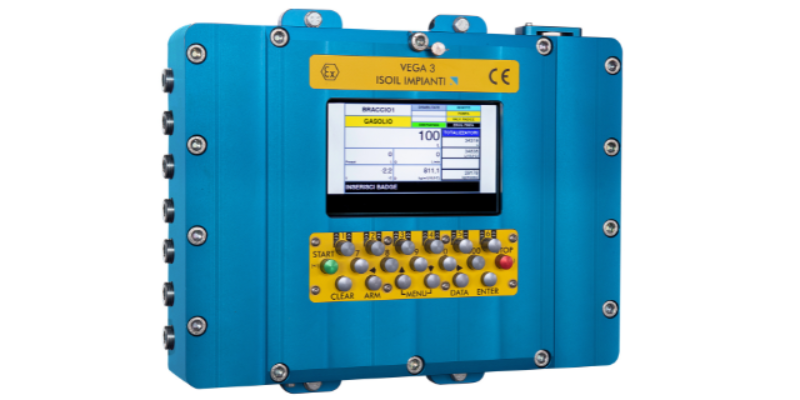Bioethanol blending: an overview of properties and solutions

Topics:
- Properties of bioethanol that make it a suitable fuel for blending with gasoline
- Comparison of bioethanol blending with other renewable fuel options, such as biodiesel
- ISOIL in-line solutions for bioethanol blending
Bioethanol is a type of renewable fuel produced from organic material, primarily crops such as corn, sugarcane, or wheat. It is considered an alternative to conventional fossil fuels because it significantly reduces greenhouse gas emissions and contributes to a more sustainable energy sector. Bioethanol is commonly used as a blending component in gasoline.
ISOIL, a leading company in the field of industrial instrumentation and process control, specializes in providing in-line solutions for bioethanol measurement. Our innovative technologies are designed to optimize the loading and unloading processes, ensuring efficiency, quality, and safety. These solutions enable real-time measurement and analysis of critical parameters, such as flow rates, temperature, pressure, and composition, throughout the production process.
Do you need a quote for a personalized solution?
Properties of bioethanol that make it a suitable fuel for blending with gasoline
Bioethanol possesses several properties that make it a suitable fuel for blending with gasoline:
- Renewable and Sustainable: Bioethanol is produced from renewable resources such as crops and agricultural waste, making it a sustainable fuel option. Unlike fossil fuels, which are finite and contribute to environmental degradation, bioethanol offers a renewable alternative that helps reduce reliance on non-renewable resources.
- Lower Greenhouse Gas Emissions: Bioethanol has lower greenhouse gas emissions compared to gasoline. During its production and combustion, bioethanol releases significantly fewer carbon dioxide (CO2) emissions, which contribute to climate change. By blending bioethanol with gasoline, the overall carbon footprint of the fuel mixture can be reduced, leading to a cleaner and greener energy option.
- High Octane Rating: High octane rating, refers to its resistance to knocking or pre-ignition. Blending bioethanol with gasoline increases the overall octane rating of the fuel, improving engine performance and allowing for higher compression ratios. This property makes bioethanol-gasoline blends suitable for high-performance engines, improving power output and fuel efficiency.
- Oxygen Content: It contains oxygen molecules, which facilitate more complete combustion. The presence of oxygen in bioethanol increases the oxygen content in the fuel mixture, resulting in a more efficient and cleaner combustion process. This property helps reduce carbon monoxide (CO) and hydrocarbon emissions, leading to improved air quality.
- Biodegradability: In case of fuel spills or leaks, bioethanol is biodegradable, meaning it can be broken down by natural processes over time. This property reduces the environmental impact of accidental releases and enhances the safety and sustainability of fuel handling and storage.
- Blending Flexibility: Bioethanol can be easily blended with gasoline in various proportions, ranging from low-level blends (e.g., E10, containing 10% ethanol) to high-level blends (e.g., E85, containing up to 85% ethanol). This blending flexibility allows for gradual adoption and compatibility with existing gasoline infrastructure, vehicle engines, and fuel distribution networks.
Read more about all the fuel blending types and solutions by ISOIL

Comparison of bioethanol blending with other renewable fuel options, such as biodiesel
Bioethanol and biodiesel are two prominent renewable fuel options that offer distinct characteristics and benefits. Here's a comparison between the bioethanol blending process and biodiesel:
- Feedstock: Bioethanol is primarily produced from crops such as corn, sugarcane, or wheat, while biodiesel is typically derived from vegetable oils or animal fats. The choice of feedstock affects the availability, sustainability, and environmental impact of each fuel.
- Compatibility: Bioethanol is blended with gasoline and used as an additive, whereas biodiesel is blended with diesel oil or used as a pure substitute for the latter. Both bioethanol-gasoline blends and biodiesel-diesel blends may require certain infrastructure and engine modifications (above certain percentages) to ensure compatibility.
- Carbon Footprint: Bioethanol and biodiesel have different carbon footprints. Bioethanol generally results in lower greenhouse gas emissions compared to gasoline, as it is produced from renewable resources and offers better combustion properties. Biodiesel also reduces CO2 emissions but to a lesser extent than bioethanol.
- Energy Content: Bioethanol has a lower energy content compared to gasoline, which can result in reduced fuel efficiency. In contrast, biodiesel has a slightly higher energy content than diesel, which can lead to improved mileage. However, the energy content difference varies depending on the specific blend ratios.
- Blending Ratios: Bioethanol can be blended with gasoline in various ratios, ranging from low-level blends like E10 (10% ethanol) to high-level blends like E85 (up to 85% ethanol). Biodiesel blending ratios typically range from B5 (5% biodiesel) to B20 (20% biodiesel) or higher, depending on the application and regulations.
It's important to note that the suitability of bioethanol or biodiesel as a renewable fuel option depends on factors such as regional availability of feedstocks, existing infrastructure, vehicle compatibility, and environmental considerations. Both fuels play significant roles in reducing reliance on fossil fuels and mitigating climate change, offering different advantages based on their properties and applications.
ISOIL in-line solutions for bioethanol blending
ISOIL offers the Vega 3 Multi-Counter Flow Computer as part of their in-line solutions for bioethanol blending. The Vega 3 Flow Computer is a versatile and advanced device designed specifically for accurate measurement and control of flow rates in various industrial applications, including bioethanol blending processes.
Vega 3 multi-counter flow computer

Vega 3 is a calculator-indicating device to be used in measuring systems for liquids other than water (MID MI-005), including bioethanol blending, approved by the Notified Body LNE (France) with the Evaluation Certificate n. LNE29970.
Metrological characteristics
- Multiple stream management: up to 6 measuring systems / loading arms
- Multiple meters management: up to 12 meters in total, up to 4 meters per measuring system / loading arm
- Multiple product management: up to 16 products in total, up to 4 products per meter
- Measuring system-loading arm configuration:
- single meter
- sequential blending
- ratio blending (up to 4 meters)
- side stream blending (up to 4 meters)
- differential (2 meters)
- Security:
- Weight and Measure Switch seal
- Up to 8 user accounts
- Log parameters modification function
- Continuous self-diagnosis
- Approved for interruptible and non-interruptible measuring systems according to MID European Directive.
Want more information about our electronic counters?
Contact us
Contact us for more information about our services and products
Form sent successfully
Error
